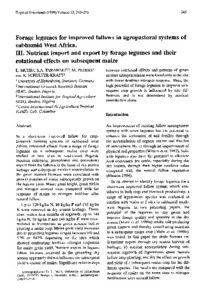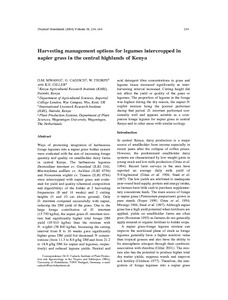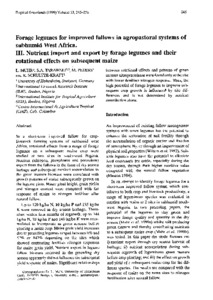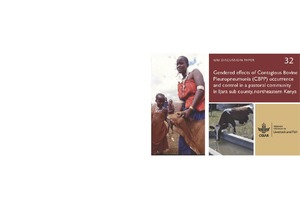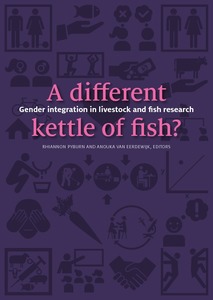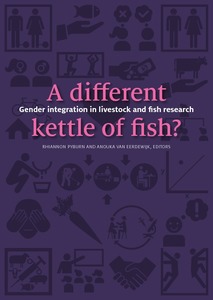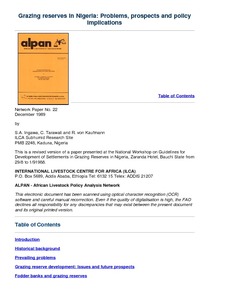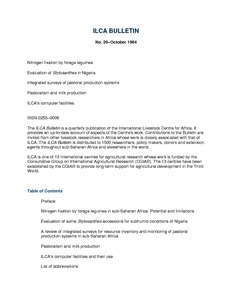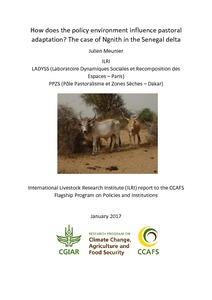Forage legumes for improved fallows in agropastoral systems of subhumid West Africa. I. Establishment, herbage yield and nutritive value of legumes as dry season forage
A short-term improved fallow system based on forage legumes is suggested for crop-livestock farming systems in subhumid West Africa targeted to enhance soil fertility and dry season feed for cattle. At two sites, 13 legume species were compared with the natural fallow vegetation, the nutritive value of which typically fails to meet cattle requirements during the dry season. Establishment, dry matter yield and nutritive value of leguminous herbage in the year of establishment were evaluated as well as regeneration of legumes after a cropping phase.

